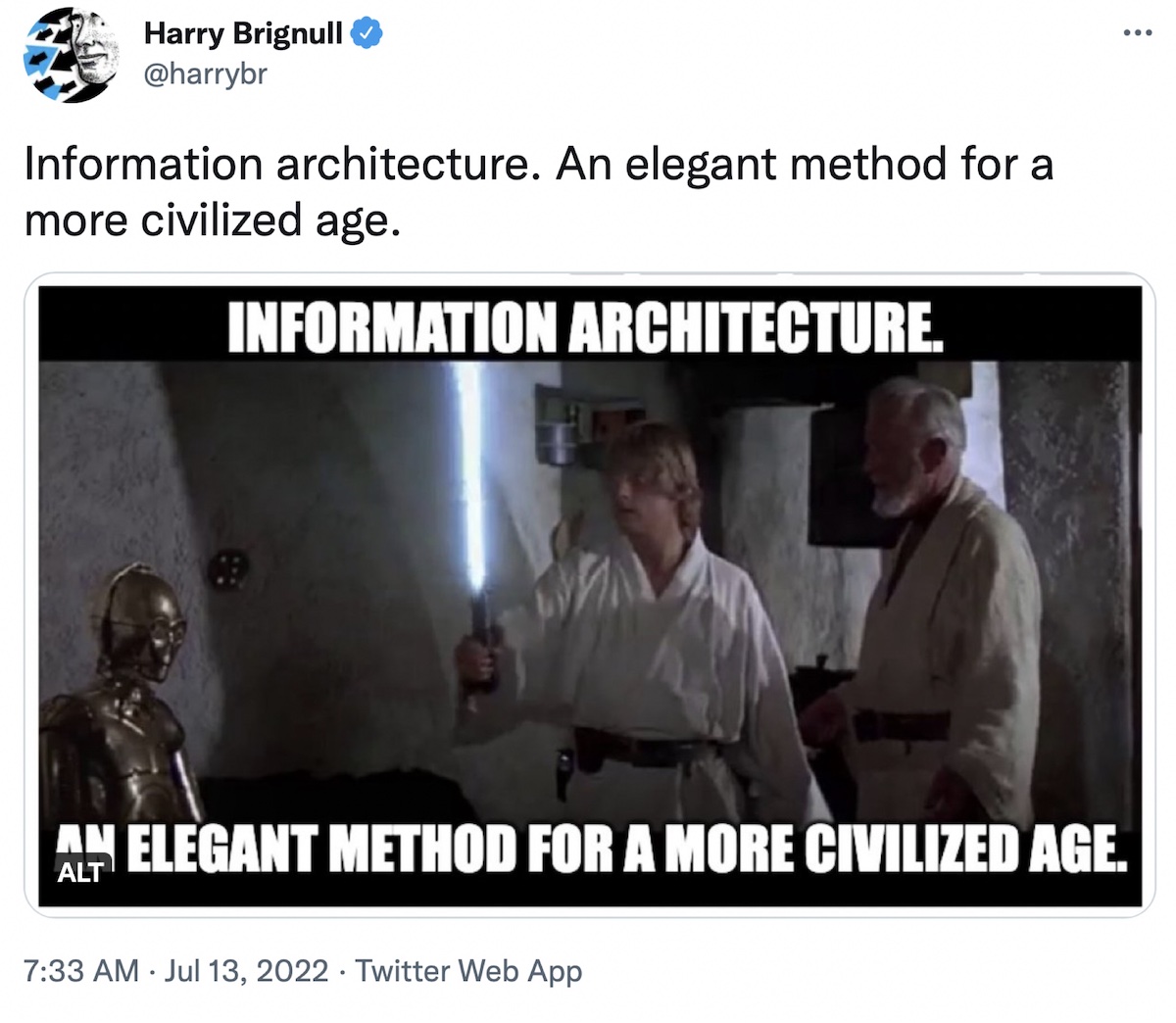A version of this post first appeared in my newsletter. Subscribe to receive posts like this in your inbox every other Sunday.
The first World Information Architecture Day happened twelve years ago. The most recent was on March 4.
If you haven’t heard of World IA Day, it “celebrates information architecture and shares knowledge and ideas from analog to digital, from design to development, from students to practitioners, globally and locally.” I.e., it’s a day set aside for building IA awareness. The “world” part comes from being distributed in small local events around the world.
I was “thematic chair” for the first WIAD and organizer of the local event in Panama City, Panama — my hometown, where I lived at the time. I didn’t participate in yesterday’s WIAD, not for lack of interest, but because my family and I were back in Panama, visiting for the first time since the pandemic. So, this year, I celebrated World IA Day by myself.
We moved to Northern California almost a decade ago. A big draw was being where the world’s leading digital experiences are forged. However, I quickly realized there wasn’t much awareness of IA among folks designing these systems.
Unfortunately, the situation hasn’t changed much in the intervening years, despite the best efforts of a dedicated community. People still conflate IA with sitemaps — and that’s when they consider IA at all. I suspect many see the discipline as a throwback to a prior era.

And yet, IA is more important today than ever — and will be so as long as software continues eating the world.
IA is about establishing clear conceptual distinctions. Ultimately, it’s a design discipline focused on improving how we think. And improving thinking by clarifying conceptual distinctions doesn’t just improve how we think; it also matters to the new intelligences coming online and how we interact with them.
A recent post by Melanie Mitchell claims that conceptualizing is artificial intelligence’s most important open problem. Mitchell notes that “forming and abstracting concepts is at the heart of human intelligence.” Which is to say, clear conceptual distinctions are core to good thinking, whether in humans or machines.
Clarifying conceptual distinctions and relations is what information architecture is all about. Whether people understand IA in this way — or even call it by the label “information architecture” — is somewhat irrelevant. The fact remains that a design discipline focused on clarifying concepts is crucial to designing systems that help us think and act more intelligently.
Information architecture is such a discipline. As such, its ultimate focus is human flourishing — a noble and urgent calling. I’m proud to call myself an information architect and will continue to celebrate World IA Day wherever and whenever I am — even if I’m alone.